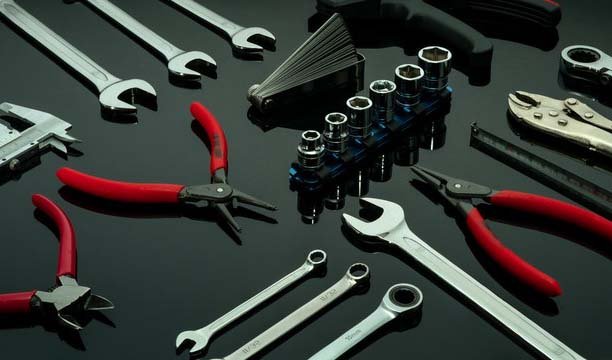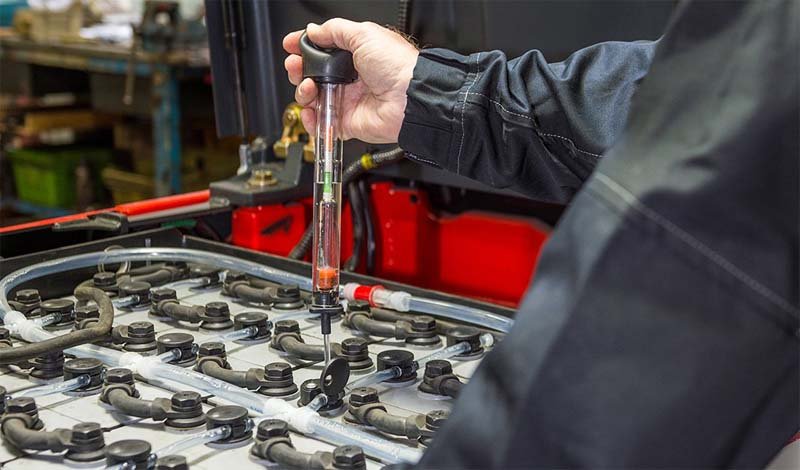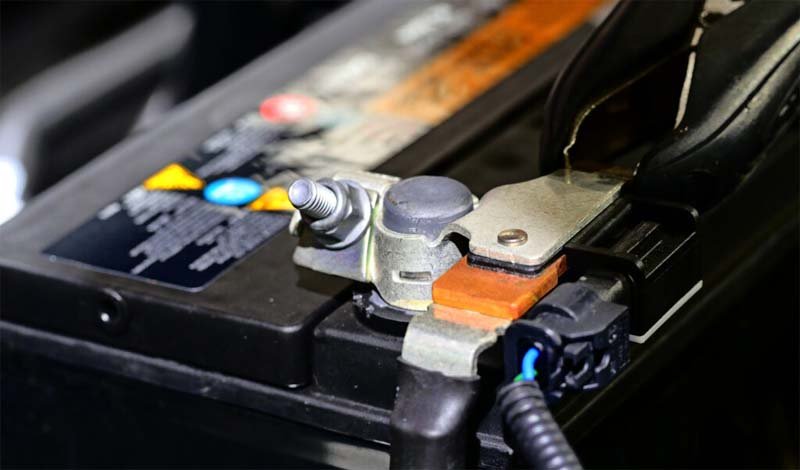Lead acid batteries store and release energy through the chemical reaction of lead plates and sulfuric acid electrolyte within the battery. In principle, the charging process of a lead acid battery is a process that converts electrical energy into chemical energy through an external power source. During the process, charging current passes through the battery. There are chemical changes going on inside the battery. These chemical changes absorb the energy as they form. The discharging process of a lead acid battery converts chemical energy into electrical energy and then supplies it to external loads. When the battery is connected to an external load, a reversed chemical change occurs which is the opposite of the changes in the charging process. The energy absorbed by the battery during charging is released as electricity.
Lead acid battery chargers are quite necessary for the daily use of car batteries. Ideally, a lead acid battery in a car can be charged and discharged through the everyday use of the car. However, in the daily use of the car, there will be problems take place in lead acid batteries due to climate reasons and how they have been used. A lead acid battery charger is a good solution to these problems. Therefore, to a certain extent, it can be said that the car battery chargers are essential for the use and maintenance of lead acid batteries. The use of a lead acid battery charger can solve many car battery problems.
The working principle and maintenance of lead acid batteries and their chargers involve chemical reactions and many other related factors. The proper use and maintenance of lead acid batteries can extend their service life and thus reduce the economic expense. Therefore, as a professional supplier of car battery chargers, we have concluded some precautions for the use of a lead acid battery charger here in the following content.
We should pay attention to the following aspects when charging lead acid batteries:
Personal Safety Concerns
Necessary Protective Equipment
Before operating any lead acid batteries, the first thing to consider is that you need to wear the necessary protective equipment. They usually include protective clothing, a helmet, gloves, a goggle, etc. Also, make sure that you have soap and running water handy. The use gloves and goggles can help protect your hands and eyes from corrosive sulfuric acid. If the sulfuric acid in the battery comes into contact with the skin, wash it immediately with soap and water. If the sulfuric acid gets into the eyes, they should be rinsed with running water for at least 10 minutes. The helmet can protect against swinging or falling of the batteries when a battery is lifting up or down from the shelf.
Don’t Smoke
Since there will be hydrogen and oxygen produced during the charging process of lead acid batteries, make sure there is no flame in the nearby before charging. Also, smoking should also be banned to avoid fires. Inflammable and no smoking signs can be posted in the charging and storage areas of lead acid batteries when necessary.

Pay Attention to Metal Tools and Other Metal Objects
The electrodes of lead acid batteries are exposed during charging and maintenance process. You should make sure that neither electrode touches the same conductor at the same time. If the two electrodes are connected by a conductor, there will be current flowing through anything that touches the both sides. The use of metal tools can cause the forming of sparks between the electrodes, which will possibly result in a short circuit. A short circuit may also cause an electric shock, fire or even an explosion. In addition to metal tools, avoid wearing any rings, necklaces, or watches when operating lead acid batteries. Their wrong contact with the battery’s electrodes could pose a serious hazard.
Before Charging a Lead Acid Battery
Choose the Right Location
When choosing a place to charge a lead acid battery, the main consideration should be whether there is sufficient airflow. A good ventilation condition can help to prevent the battery temperature from rising too fast during the charging process.
Select the Right Type of Lead Acid Battery Charger
Common lead acid batteries are flooded, gel, AGM (absorbed glass mat), etc. Before charging a lead acid battery, the battery type should be identified first. And then choose the appropriate battery charger based on the battery type. Avoid using a mismatched lead acid battery charger for the battery.
In addition to the battery types, to choose an appropriate charger should also consider the charging voltage and power of the battery. You can check the battery label or consult the battery manufacturer to get the threshold of the battery charging voltage and power.

Check the Electrolyte Level
Lead acid batteries typically use distilled or deionized water as the electrolyte. For lead acid batteries other than the sealed valve regulated lead acid (VRLA) batteries, the check and replenishment of the electrolyte can be a basic maintenance process. As long as the battery is not sealed, check to see if there is enough distilled water in the battery before the charging. The distilled water in the battery should be at a required level, which should be neither too low nor too high. The electrolyte level of the battery should promise that the battery plates can be completely immersed in the electrolyte. If the battery is a VRLA type, then its electrolyte cannot be checked and added. The charging of the battery should be according to the instructions provided by its manufacturer.
Clean the Positive and Negative Terminals of the Battery
Before charging a lead acid battery, the two terminals of the battery should also be checked for corrosion. If any sediments caused by corrosion are found in or near the terminals, they need to be cleaned promptly. Care should be taken not to allow the sediments to come into contact with the skin or eyes when doing the cleaning. To avoid the potential arcing or sparks during the cleaning, all electrical appliances in the car should be turned off first. All cables connected to the battery should be disconnected. Remember to disconnect the cable connected to grounded terminal first when you disconnect the cables.

Carrying and Lifting of Lead Acid Batteries
Lead acid batteries with the same capacity tend to weigh twice as much as common lithium batteries. Because of their weight, if batteries were to fall from a shelf, they would be likely to cause serious injury to a person. The carrying and lifting of the batteries can rely on the handles or ropes on the batteries designed for an easy mobility. If it is necessary to carry and lift a large number of lead acid batteries frequently, it is recommended to use the carrying or lifting equipment specially designed to meet this requirement. In addition, avoid touching the battery without any protective measures when carrying or lifting the battery. Or there may be an electric shock or contact with the sulfuric acid contained in the battery.
When Charging a Lead Acid Battery
The Temperature
Ambient temperature does affect the charging process of a lead acid battery to a certain extent. A high temperature condition will not only negatively affect the cycle life of a lead acid battery, but also lead to the reduction of its capacity. Generally speaking, float charging of a lead acid battery should be reduced when the temperature is above 30 °C. And avoid recharging any lead acid batteries when the temperature reaches 50 °C. Therefore, more care should be put into the use and maintenance of car batteries in hot summer days.
In addition to the consideration of high temperature, to avoid the freezing the battery during the cold season is also necessary. To avoid the freezing of a lead acid battery, an easy solution is to keep it fully charged. A fully charged battery is far less likely to freeze than a fully discharged one. If a lead acid battery has been confirmed to be frozen, then it should not be charged any more.
Right Place to Put a Lead Acid Battery Charger
We have mentioned in the above that the charging of lead acid batteries should be done where there is a good air ventilation condition. At the same time, when charging a lead acid battery, you also need to choose the right place to put the battery charger. Firstly, the charger should be placed as far away from the battery as possible. Secondly, it is advisable to avoid placing a lead acid battery charger directly on the top of a battery because the gas generated during the charging will cause corrosion and damage to the charger. The opposite side is inappropriate either. A battery charger should not be put underneath the battery. The weight of the battery and the poor ventilation condition will affect the use of the charger.
In addition, the sulfuric acid contained in lead acid batteries is also a potential hazard to battery chargers. A lead acid battery charger should avoid any contact with sulfuric acid. To do this, when charging a lead acid battery, the vent caps of the battery should be fully seated in place. Also, the replenishment of the electrolyte should be avoided in the battery charging process.

MUST CHECK: 6V-24V 25A Car Battery Charger
Avoid Overcharging and Discharging a Lead Acid Battery
Overcharging has been a common problem in the use of lead acid batteries. The overcharging of a lead acid battery can cause an accelerated evaporation of the electrolyte within the battery, along with the release of hydrogen and oxygen. The excessive accumulation of hydrogen and oxygen inside the battery can result in the swelling of the battery or even an explosion.
In the same way that overcharging can negatively affect the health of lead acid batteries, they can also easily get sulfated if they are kept in a low capacity for long. The direct damage to the battery caused by the sulfation is the decrease of battery capacity.
Safe Storage of Lead Acid Batteries
Finally, let’s take a look at what should be paid attention to when storing lead acid batteries.
For fully functional lead acid batteries, they should be stored indoors in a cool, dry and well-ventilated environment when not in use. They should be kept away from pets or children during the storage. Stored lead acid batteries should be inspected at least once every six months. Routine checks can ensure that the battery is maintained at a reasonable level and avoid excessive discharge. It is recommended that a trickle charger can be used for the maintenance charging of the batteries when they are not used for long period of time. As for dead lead acid batteries, a good tip is to have them labelled and place them in an acid-resistant environment.
